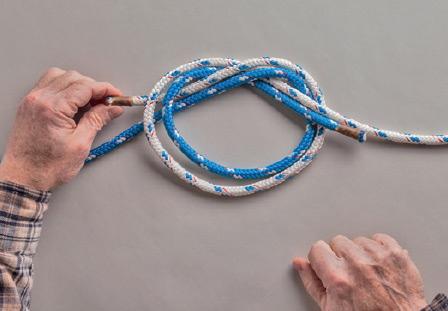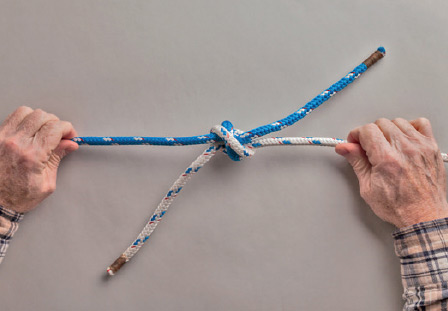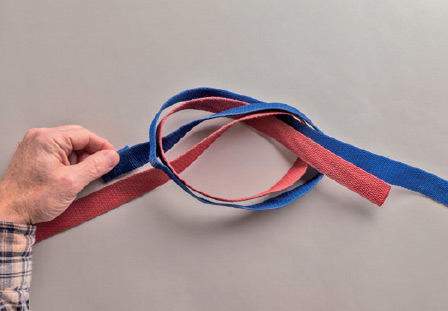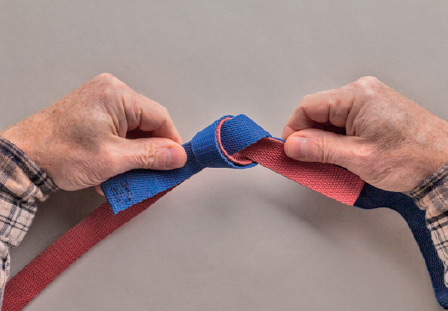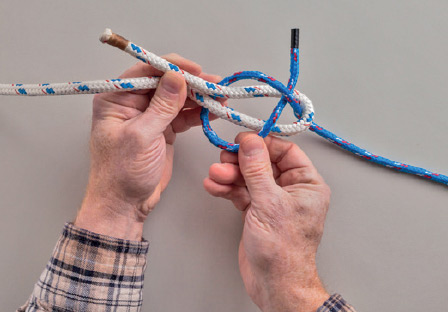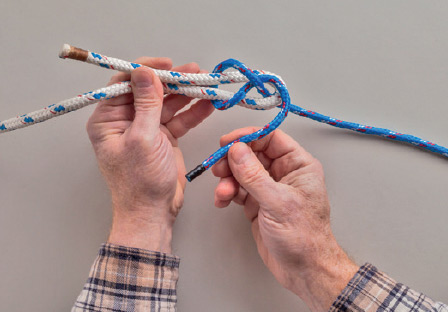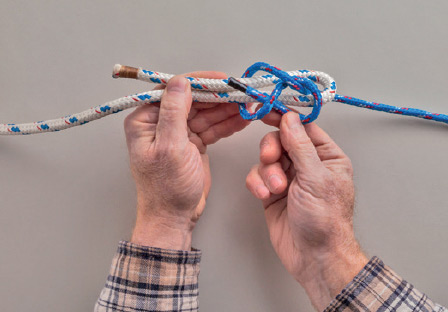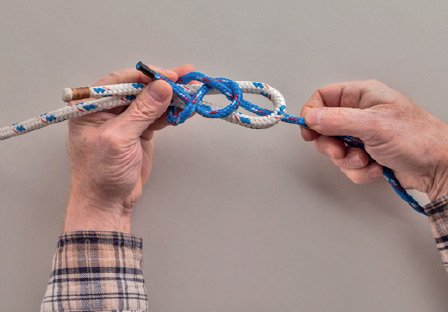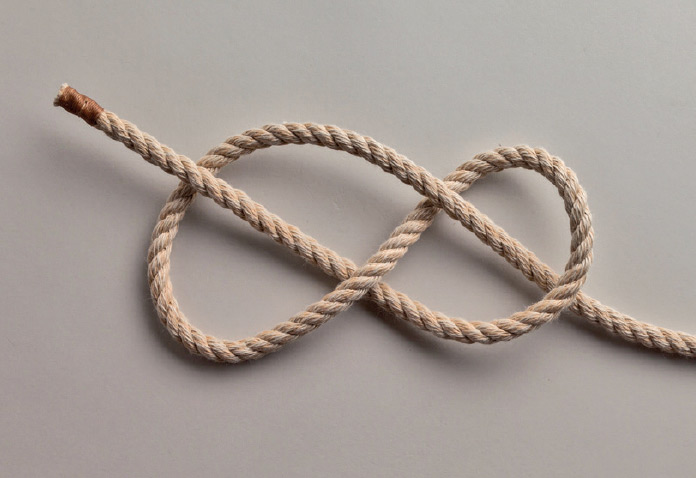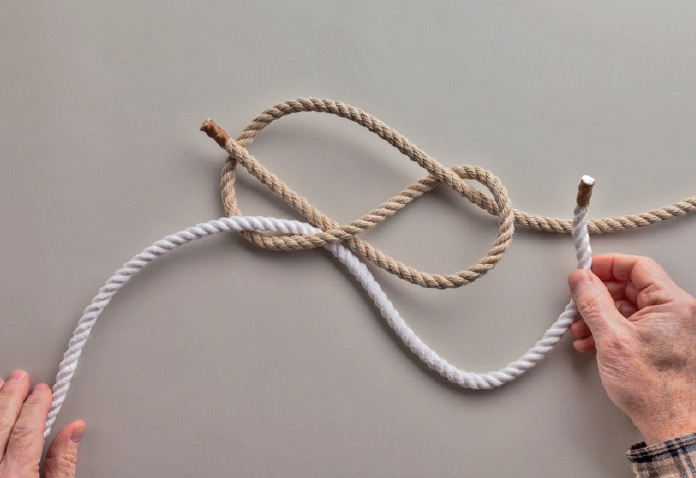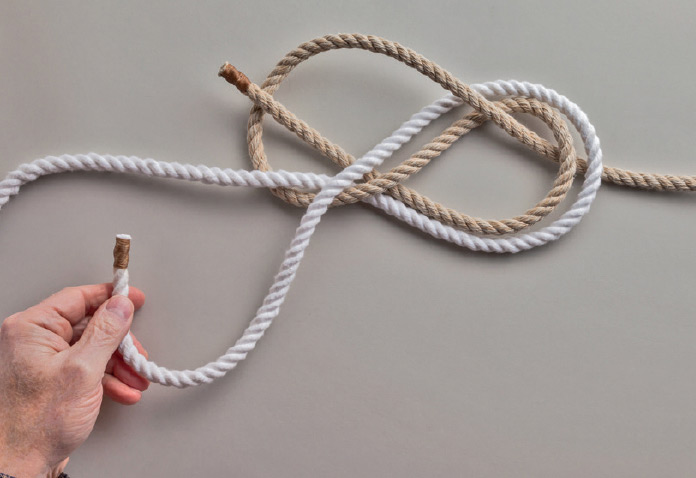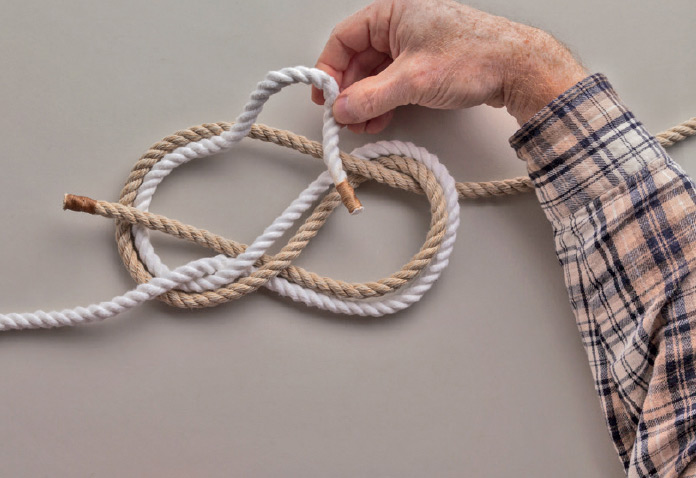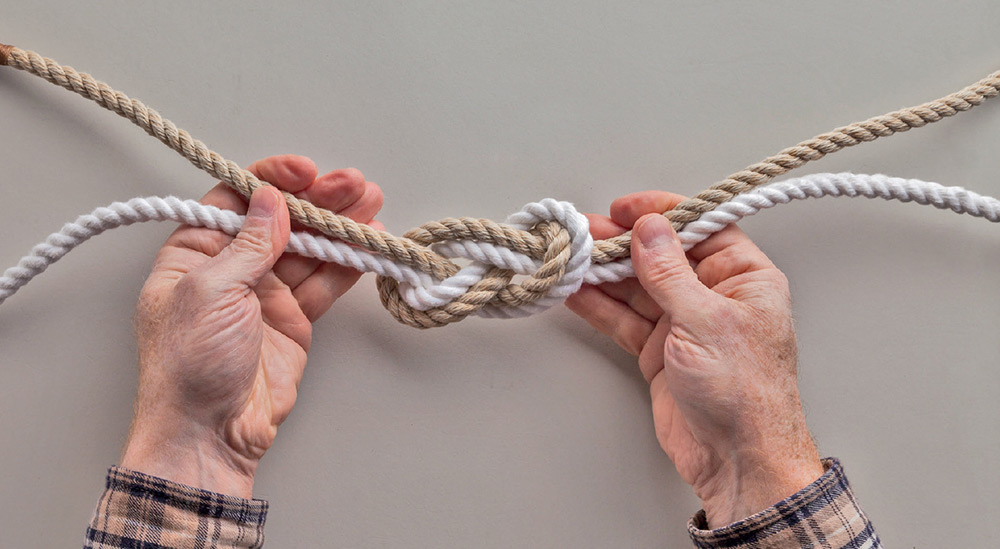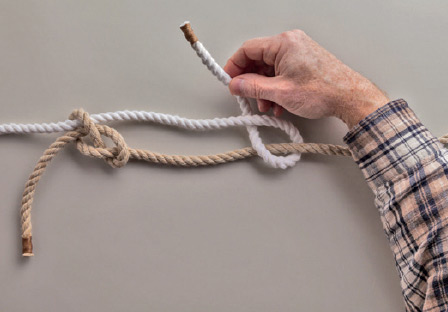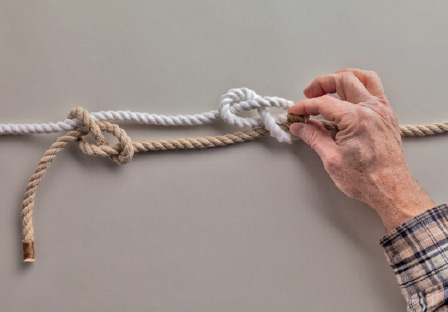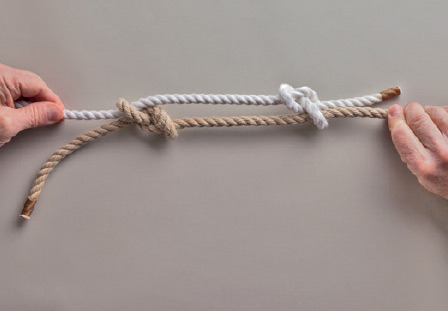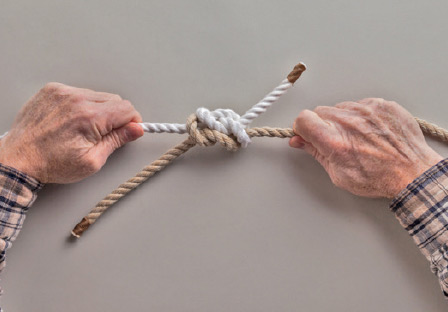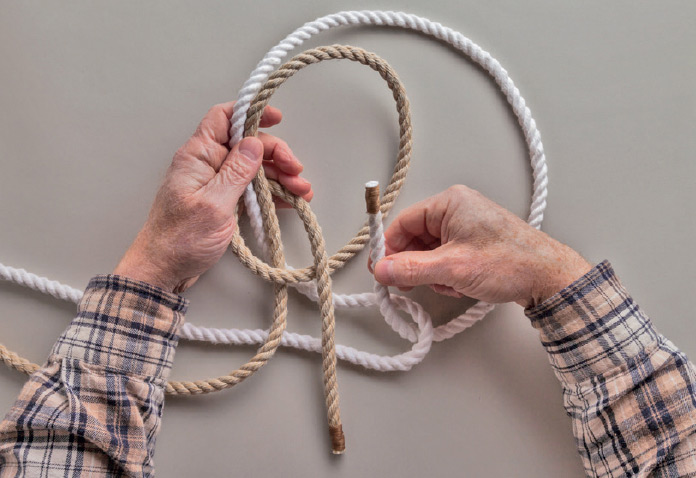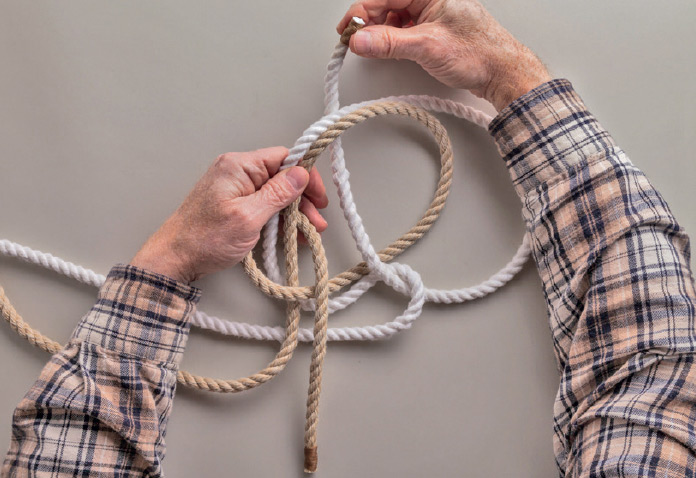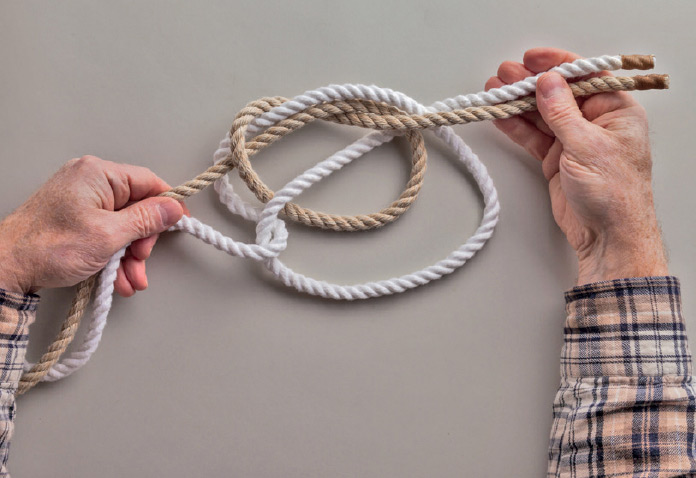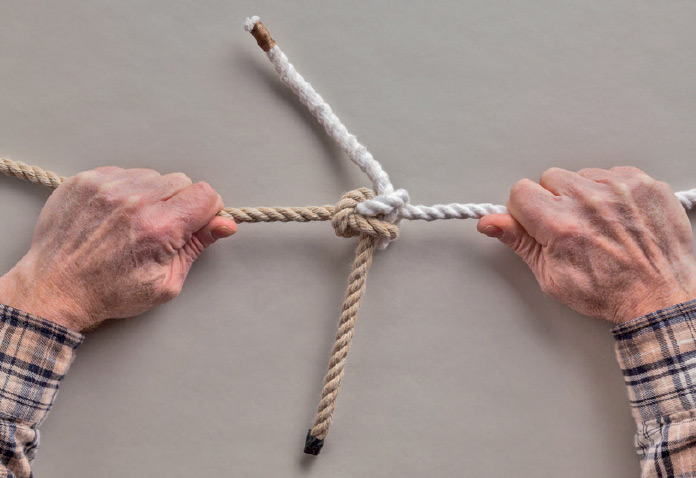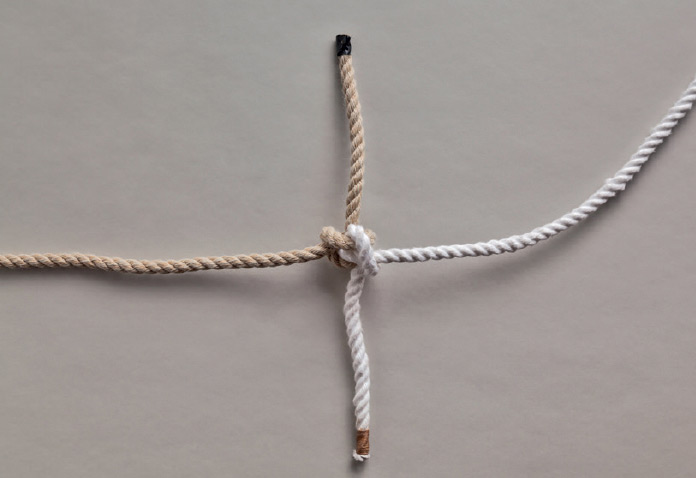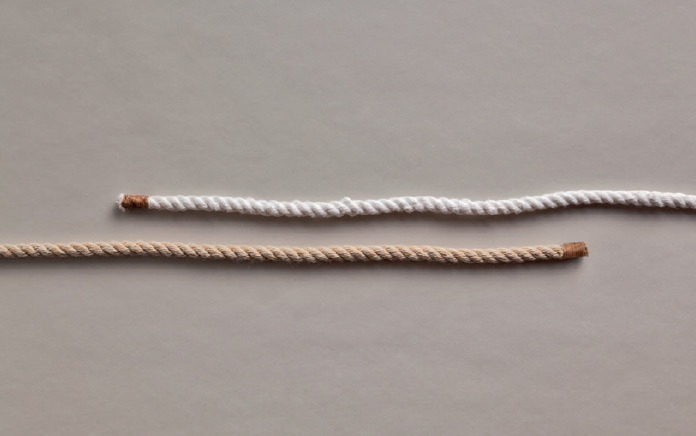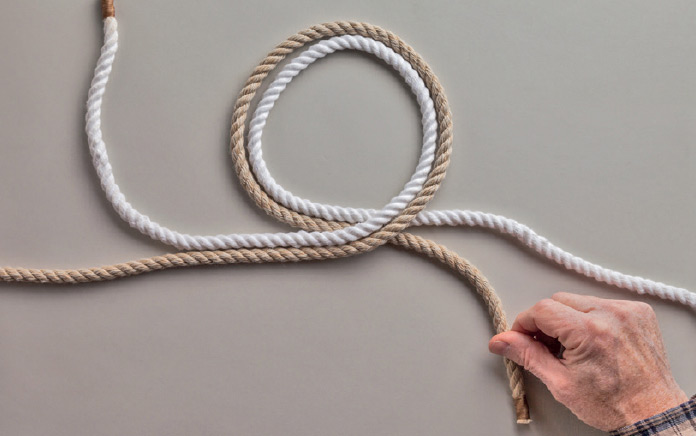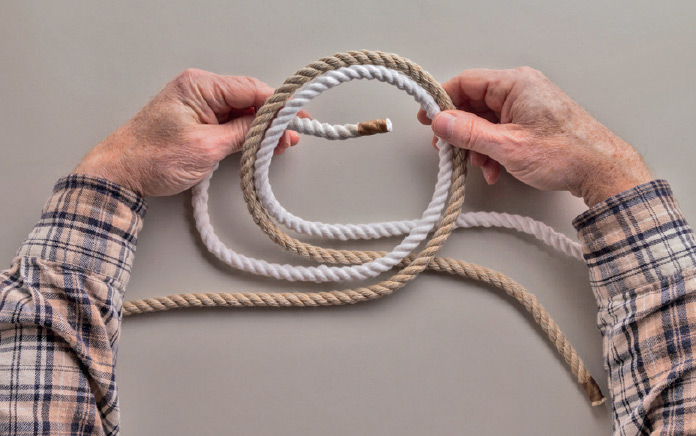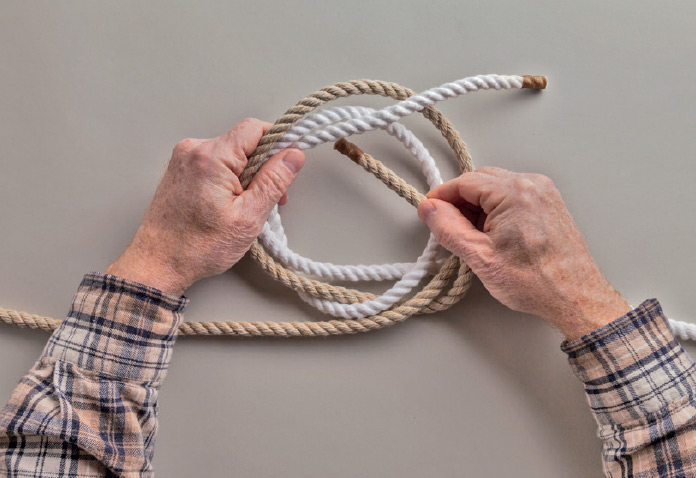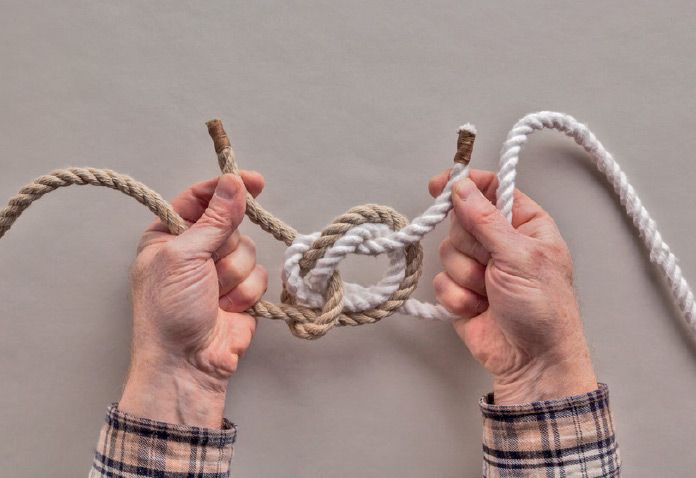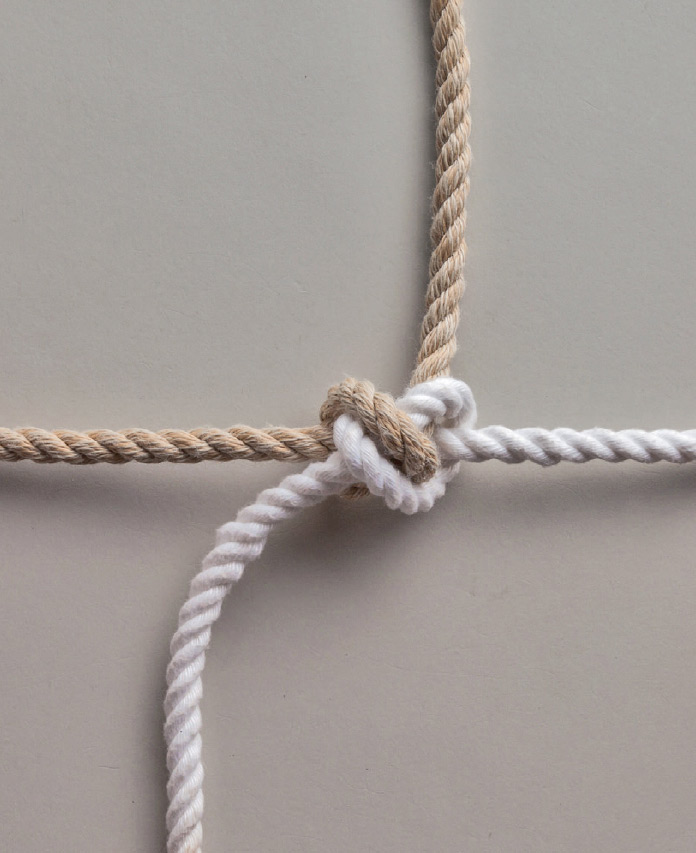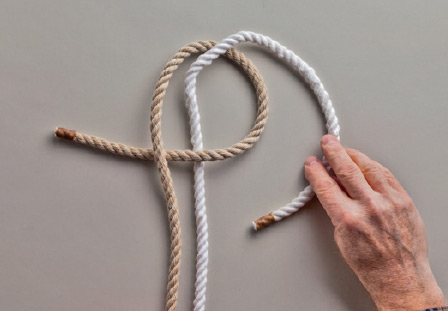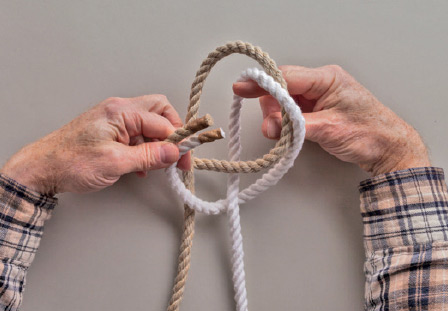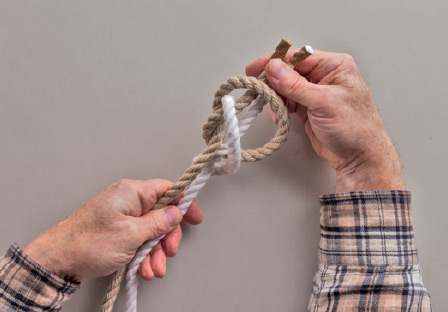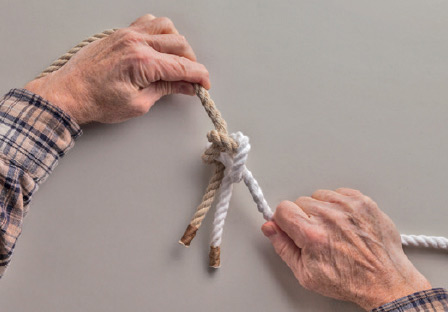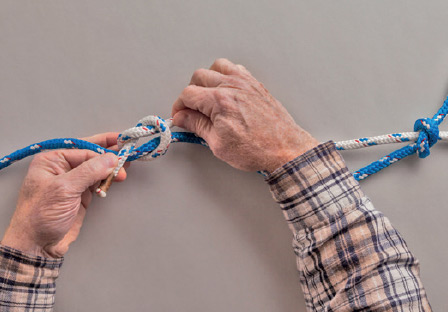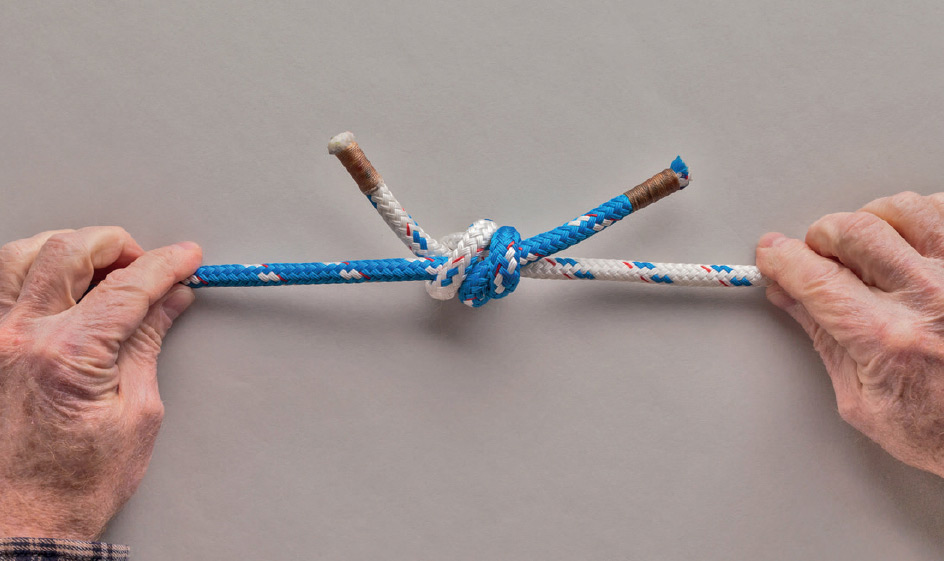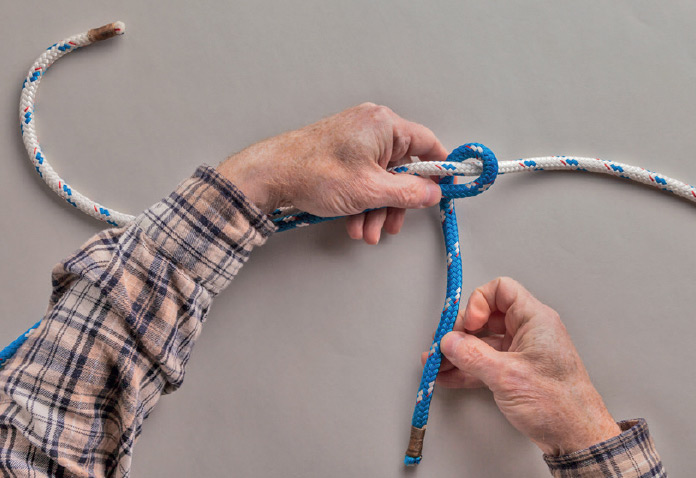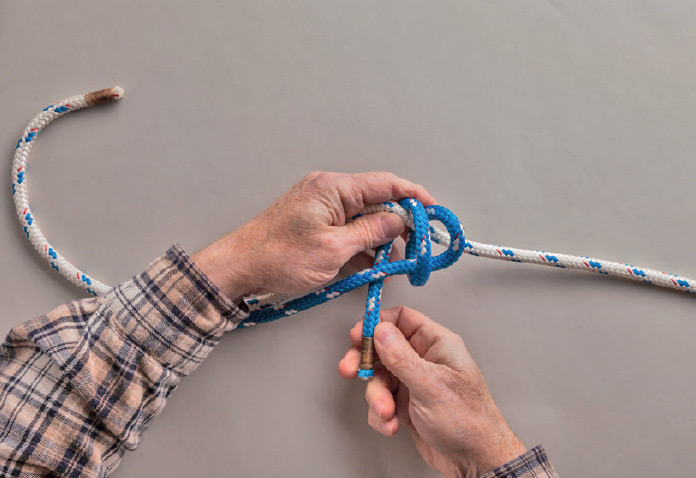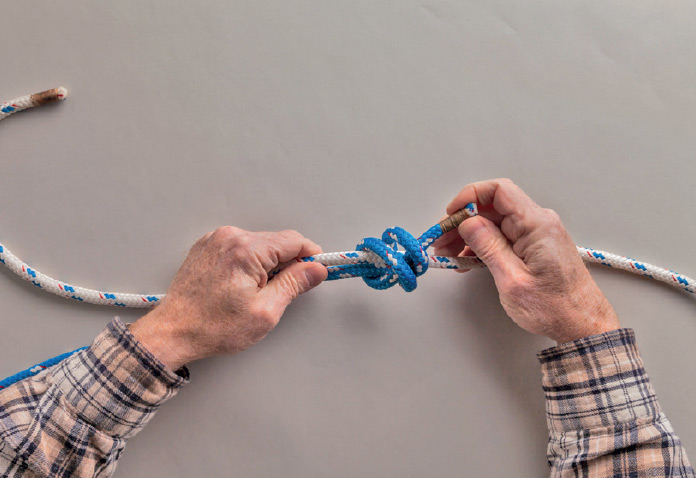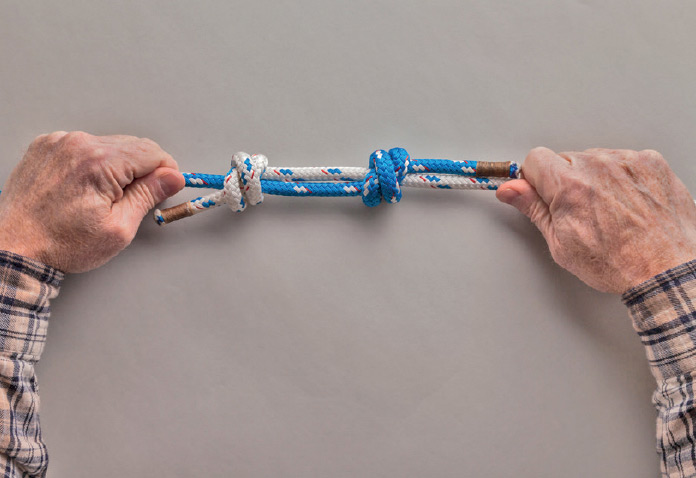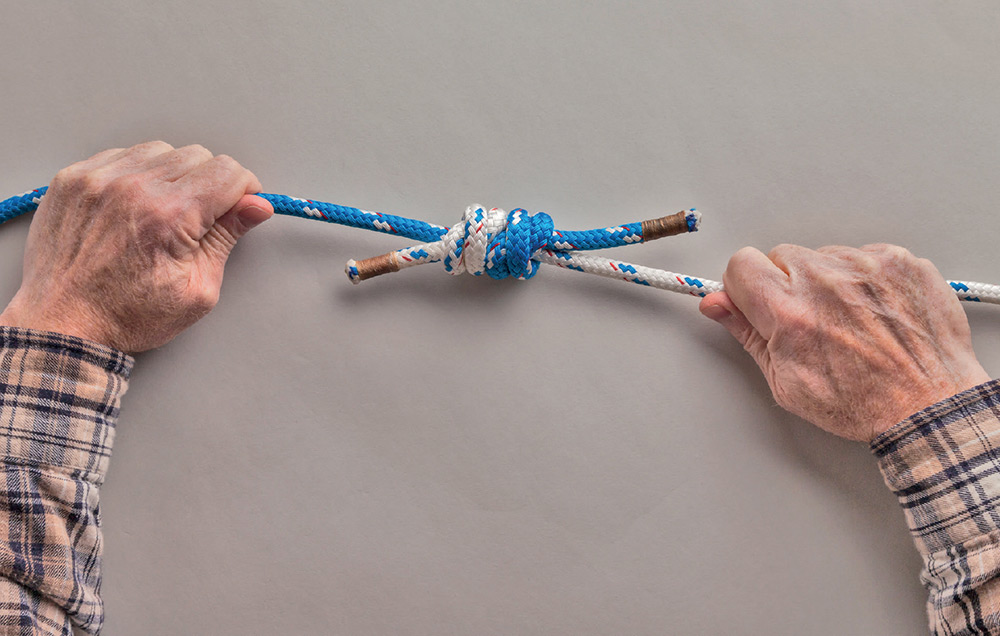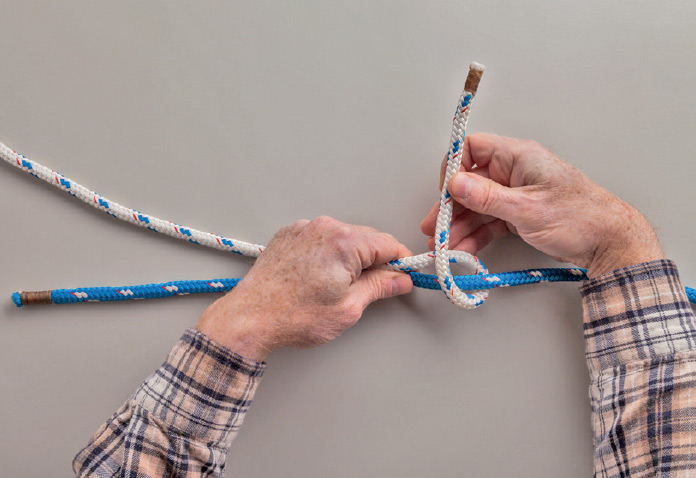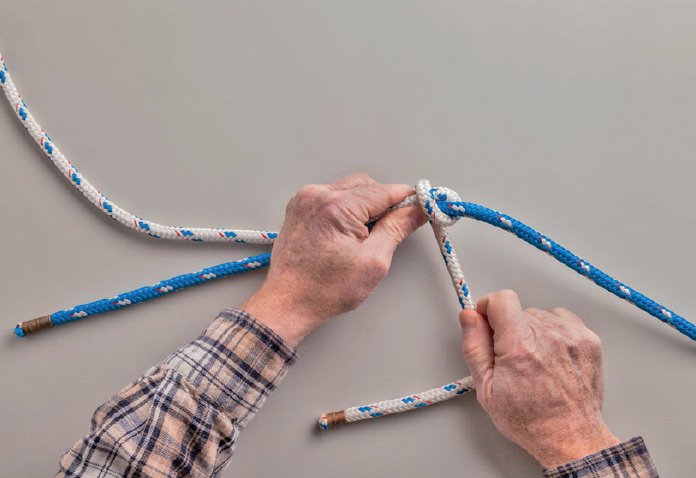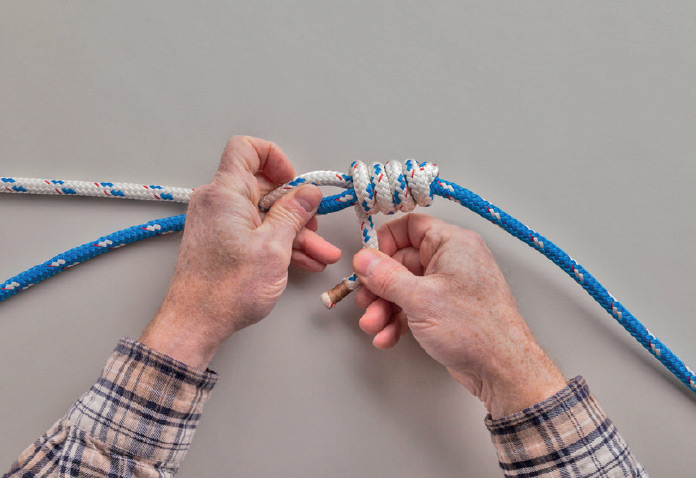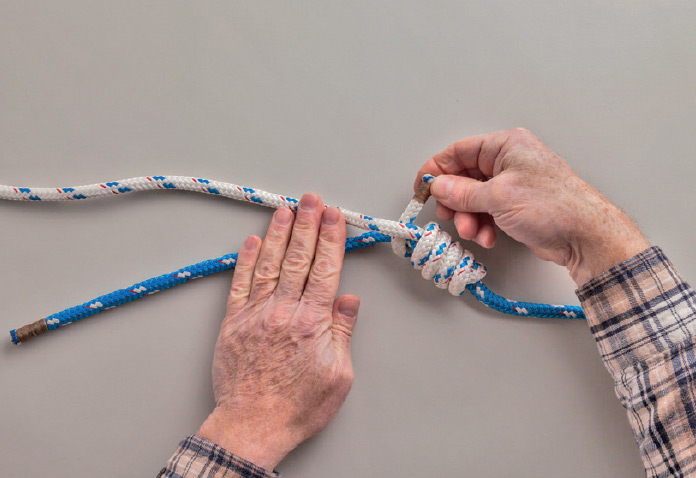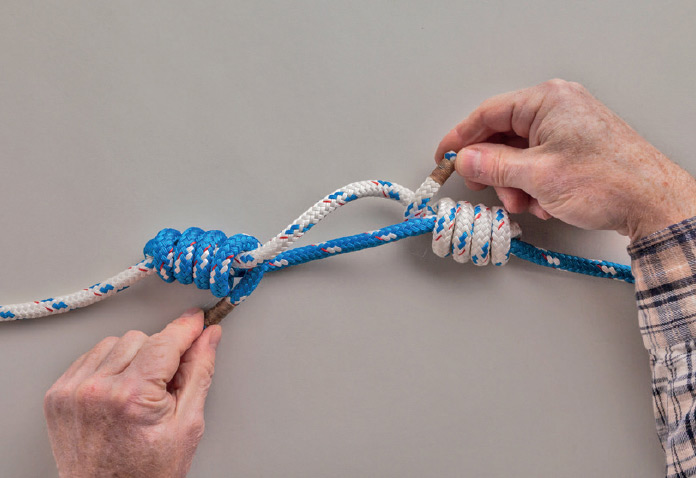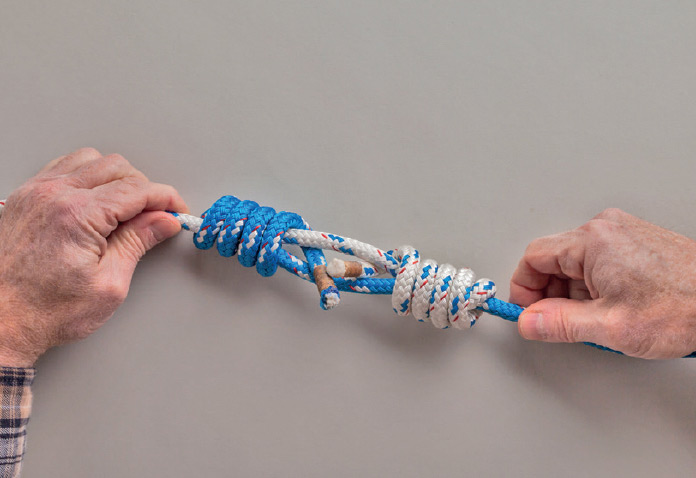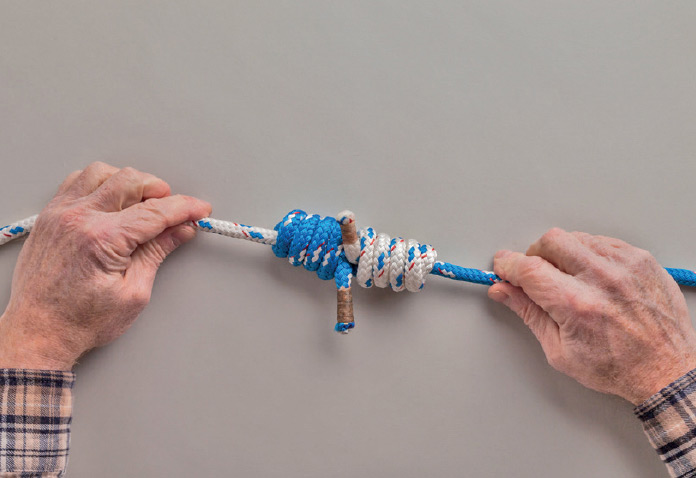Part Six
Bends
Bends are used to tie the ends of two—or occasionally three—ropes together. In accomplishing this, a bend is generally an easier, quicker, and less bulky solution than tying two loop knots through one another. Some bends work best with ropes of similar diameter, while others are optimized for ropes of different sizes, and some work well in flat materials such as leather straps or nylon webbing.
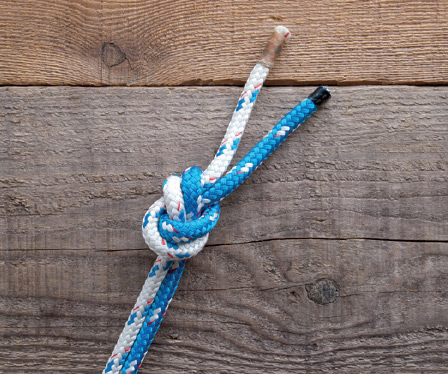
44.
Uses: load bearing; bending flat materials or rope
Pros: easy to tie; secure; straps remain flat
Cons: difficult to untie in rope
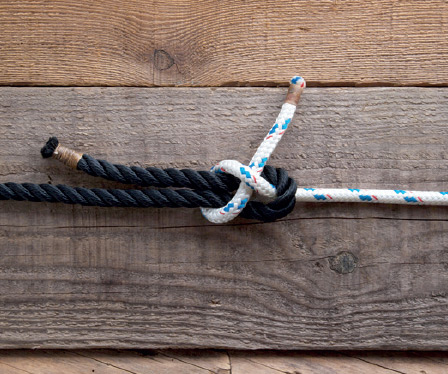
45.
Uses: temporary light-duty applications where constant load will be maintained
Pros: simple to tie and untie in ropes of equal or different diameter
Cons: insecure when unloaded
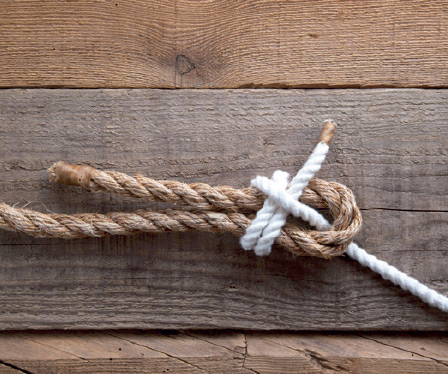
46.
Uses: joining lines of dissimilar diameters; connecting heaving and messenger lines
Pros: less prone to slippage than a Sheet Bend; easy to tie and untie
Cons: relatively insecure when unloaded; may catch on obstructions if it will be dragged
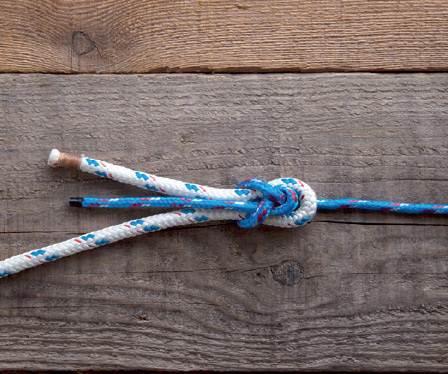
47.
Uses: joining two lines that will be dragged or towed; dinghy painters; towlines
Pros: reduced chance of catching on obstruction, less drag when towed in water
Cons: somewhat insecure if not kept under load
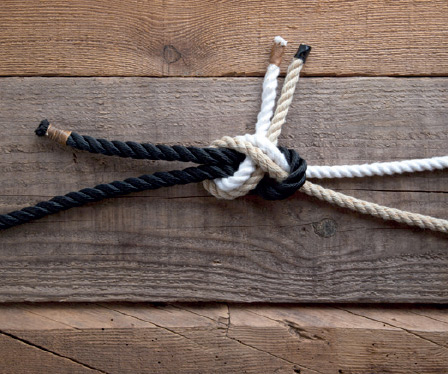
48.
Uses: two-to-one or one-to-two towing
Pros: an easy three-way bend; easy to untie; works with different size ropes
Cons: insecure

49.
Uses: standing rigging, static and dynamic loads
Pros: secure
Cons: difficult to untie in natural fiber rope; only for ropes of equal diameter
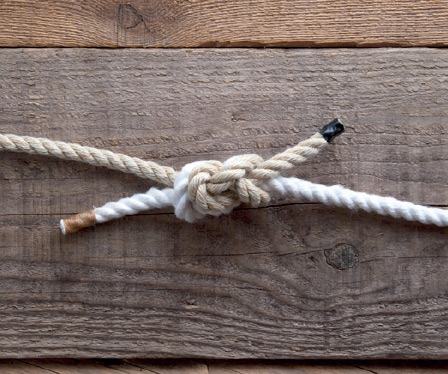
50.
Uses: joining ropes for climbing, mountaineering
Pros: very secure and strong, absorbs shock
Cons: none known
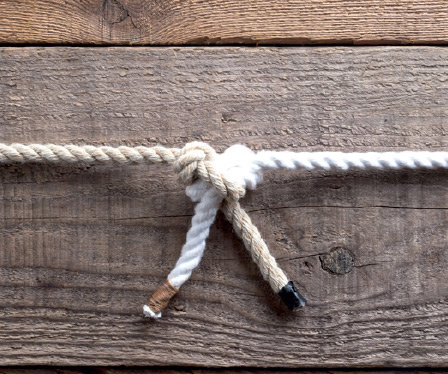
51.
Uses: joining heavy, stiff ropes
Pros: more secure than Sheet Bend or Reef Knot, easy to untie
Cons: reduces rope strength considerably
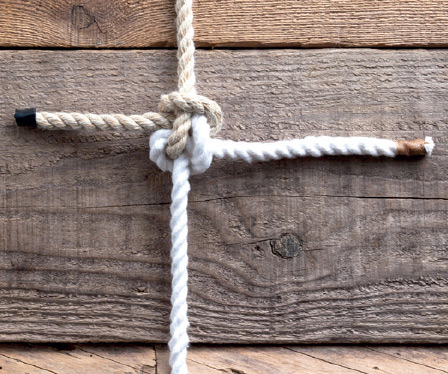
52.
Uses: load lifting, safety
Pros: strong; remains secure when unloaded; easily untied
Cons: tricky to tie; bulky; may catch when dragged
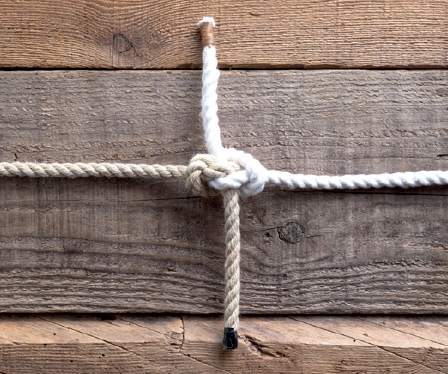
53.
Uses: load bearing
Pros: remains secure with or without load; holds slippery rope well
Cons: fussy to tie in hand; hard to untie
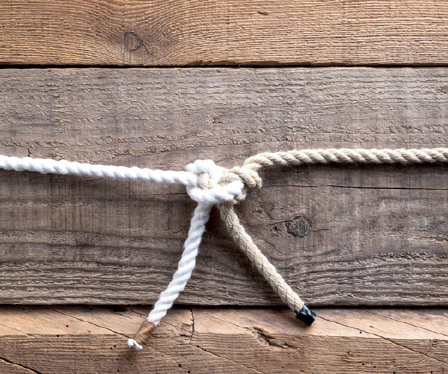
54.
Uses: load bearing in thin rope, bungee cord
Pros: very secure
Cons: fussy to tie in hand, difficult to check; hard to untie
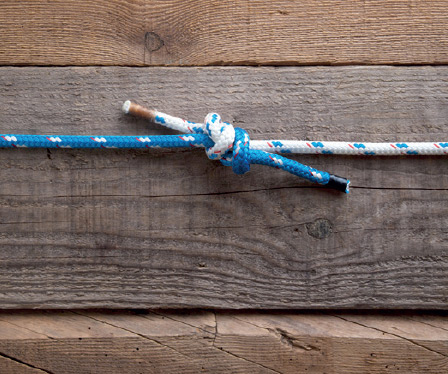
55.
Uses: joining small or medium cordage
Pros: easy and quick to tie
Cons: can capsize or slip under tension; difficult to untie
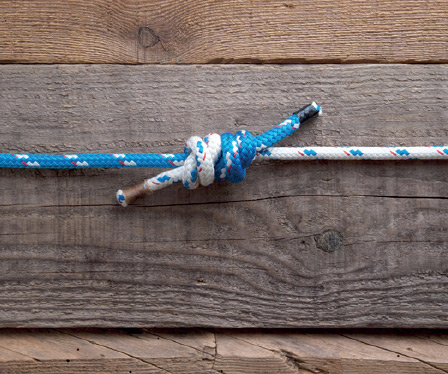
56.
Uses: joining cordage of any weight, including monofilament and anchor lines
Pros: easy to tie, quite secure
Cons: difficult to untie
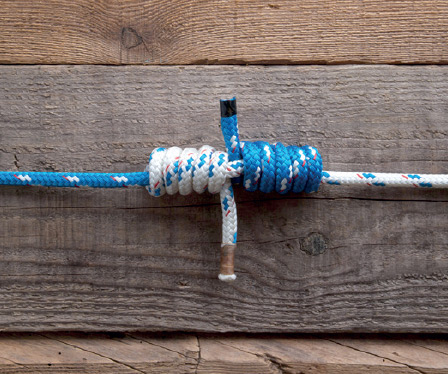
57.
Uses: joining ends of rope of any weight, especially monofilament
Pros: very secure, simple in concept
Cons: difficult to manipulate, very difficult to untie
